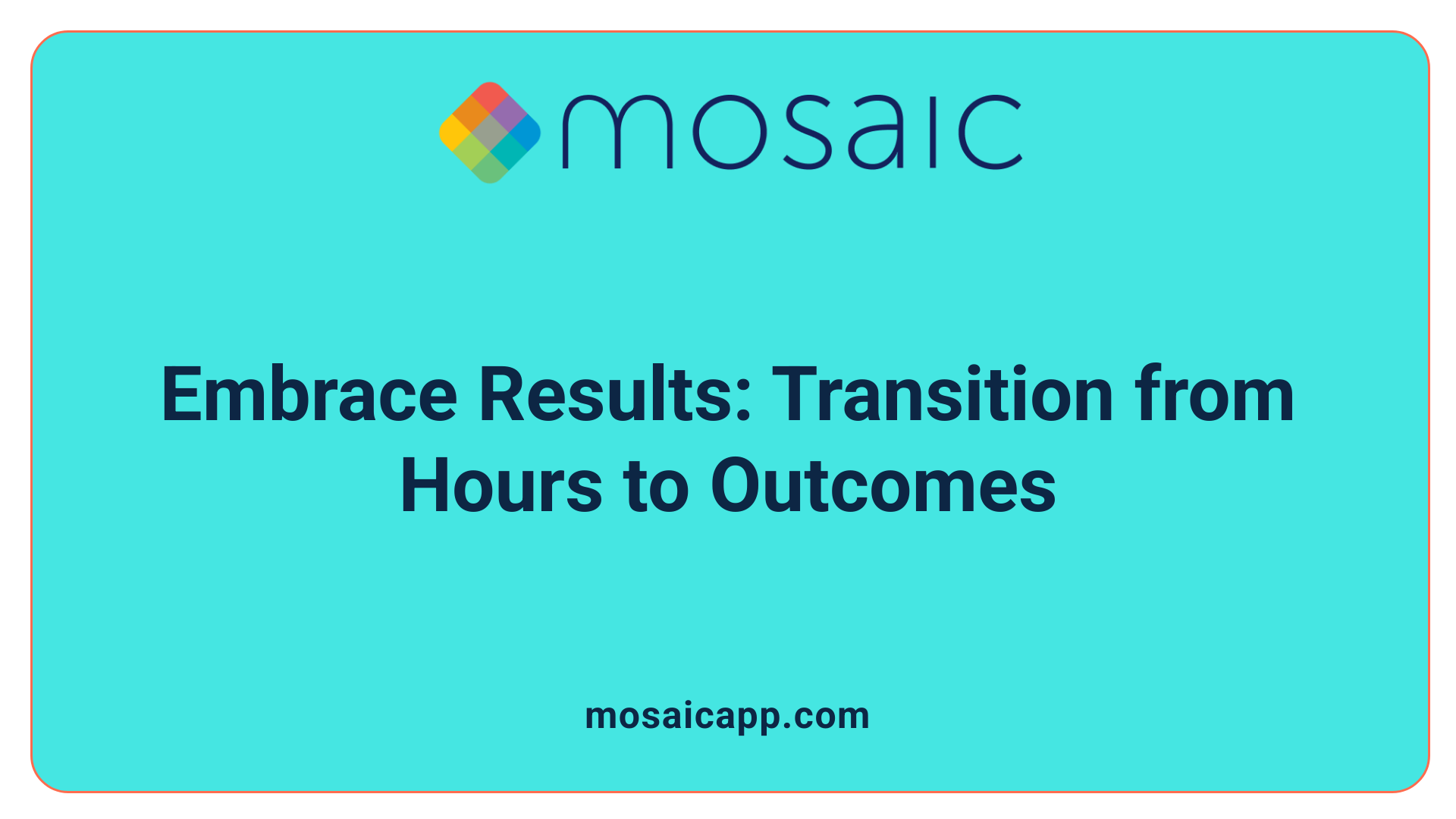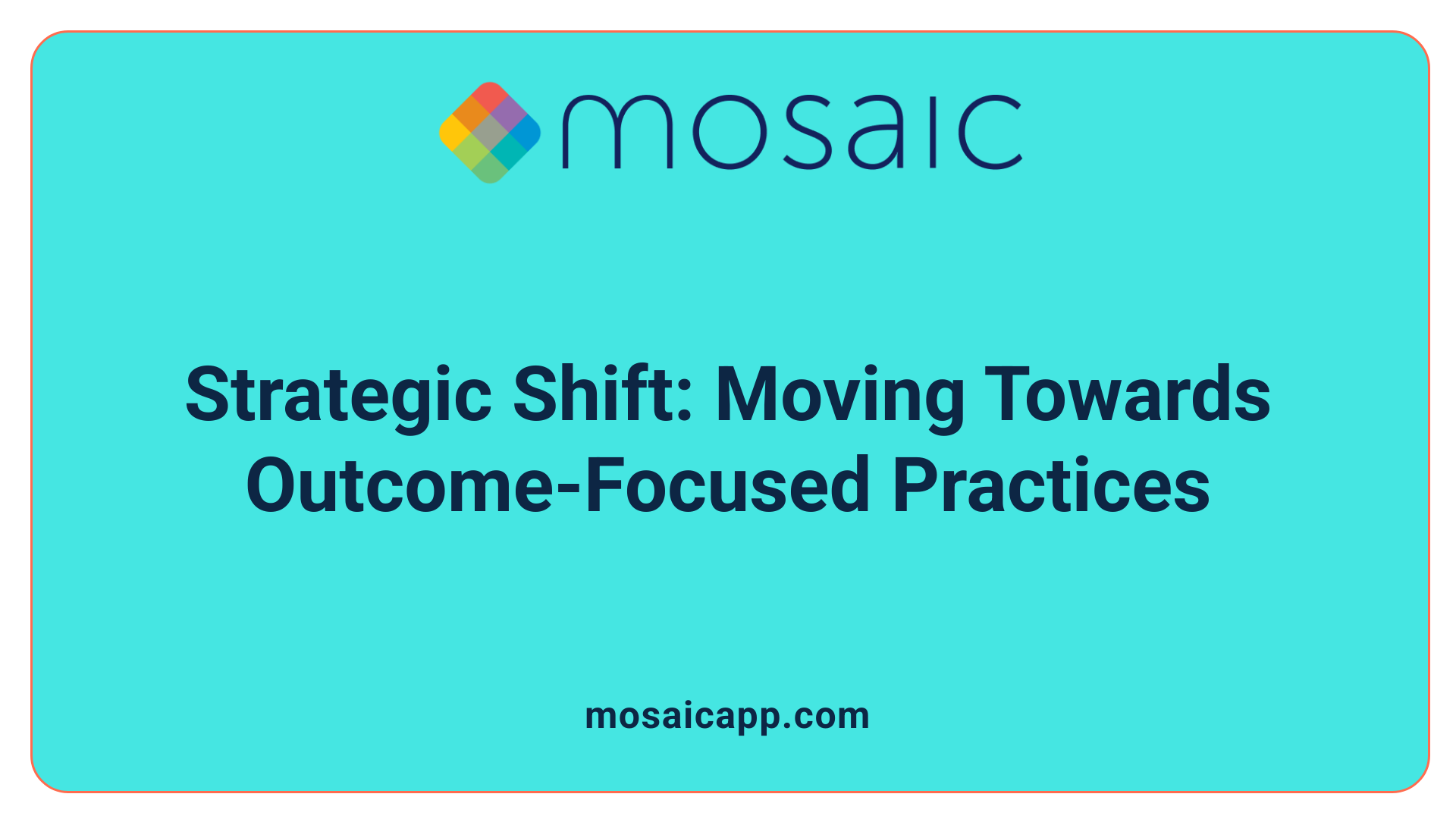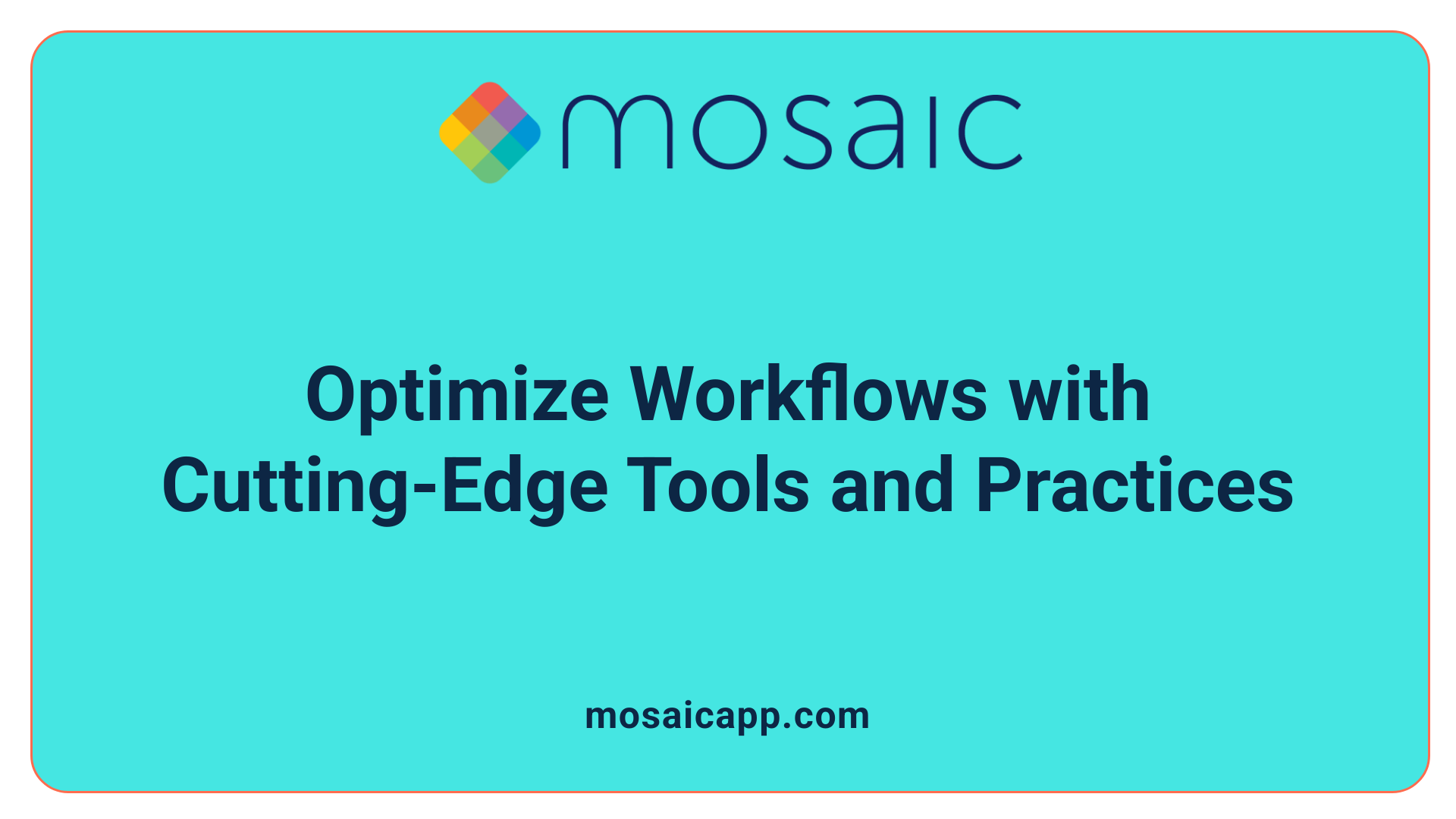Embracing a Results-Driven Culture
In today's dynamic and increasingly flexible work environment, organizations are moving away from traditional metrics of productivity—such as hours logged—and towards a focus on meaningful outcomes. This shift not only fosters greater efficiency but also enhances employee engagement and organizational success. By adopting outcome-oriented strategies, organizations can thrive amid evolving workforce expectations and technological advancements.
Understanding the Shift: From Hours to Outcomes

How has the decline of time-based productivity metrics influenced modern workplaces?
Traditionally, workplaces relied heavily on tracking hours worked as a measure of productivity. This approach suggested that longer hours equated to higher output. However, recent research and workplace trends reveal that this model is flawed. Studies show that most employees are productive for only about three hours per day, and increasing hours does not significantly boost overall productivity.
The shift away from time-based metrics is driven by the recognition that quality and impact matter more than the quantity of hours spent working. Organizations are now adopting tools that provide visibility into how effort is allocated, such as time tracking applications like NikaTime. These tools help identify unproductive activities, support better prioritization, and facilitate workload balance.
As a result, workplaces are moving toward measuring success based on outcomes—such as project completion, customer satisfaction, and innovation—rather than hours logged. This transition encourages smarter work practices and fosters a culture focused on results.
What advantages does an outcome-focused work environment offer?
Shifting to an outcome-driven approach brings multiple benefits. It boosts employee engagement by emphasizing purpose and achievement rather than merely busywork. Such environments promote autonomous work, allowing employees to set their own goals aligned with organizational objectives.
This shift enhances organizational performance through increased efficiency, innovation, and morale. Employees feel more trusted and empowered, which leads to higher job satisfaction. Moreover, outcome-focused environments can help reduce burnout caused by the misconception that longer hours equal productivity.
Adopting outcome metrics also supports diversity and flexibility. For example, Gen Z employees value autonomy, which is easier to provide in an outcome-oriented culture. Overall, organizations that focus on results tend to retain talent better, foster creativity, and achieve sustainable growth.
How does this change impact organizational culture?
The move from measuring input to output transforms workplace culture fundamentally. It cultivates trust, flexibility, and accountability. Leaders focus on defining clear goals and outcomes, giving teams the freedom to determine their processes.
Culturally, it promotes transparency and open communication. Recognition shifts from hours worked to achievements and impact, which motivates employees to excel. A result-oriented culture also encourages continuous learning and adaptation, as teams experiment with schedules and strategies to maximize outcomes.
This cultural shift aligns with modern workforce expectations, especially among younger generations like Gen Z, who prioritize work-life balance and meaningful engagement. Ultimately, organizations embracing outcomes foster more energized, innovative, and resilient teams.
| Aspect | Traditional Approach | Outcome-Focused Approach | Additional Notes |
|---|---|---|---|
| Productivity Metric | Hours worked | Results and impact | Focus shifts from process to results |
| Employee Autonomy | Limited, monitored closely | High, with clear goals | Empowers individual decision-making |
| Organizational Culture | Reactive, time-driven | Proactive, result-oriented | Fosters trust and innovation |
| Impact on Burnout | High due to busywork and long hours | Lower, promoting work-life balance | Emphasizes efficiency over time |
Emerging Paradigms of Productivity
 What are the emerging paradigms of productivity that emphasize results?
What are the emerging paradigms of productivity that emphasize results?
The modern workplace is witnessing a shift towards models that prioritize results over traditional notions of hours worked. One prominent example is the Results-Only Work Environment (ROWE), where success is purely defined by the deliverables achieved rather than the time spent at a desk. This approach enables employees to work more flexibly, focusing only on outcomes that matter.
To support these new models, organizations are increasingly leveraging advanced technology and digital transformation. Tools like project management platforms, collaboration apps, and data analytics dashboards help track progress, facilitate communication, and measure performance based on tangible results. These digital solutions allow teams to work efficiently regardless of location or schedule, fostering a culture of trust and autonomy.
An innovative concept complementing these changes is the MTR Framework™, which emphasizes movement, thought, and rest. Moving beyond a focus solely on productivity, this framework encourages employees to incorporate regular physical activity, dedicated thinking time, and restorative breaks into their routines. These elements boost creativity, reduce burnout, and improve overall effectiveness.
The shift towards outcome-based productivity also involves redefining success metrics. Instead of measuring busywork or hours logged, organizations assess project success rates, customer satisfaction scores, innovation levels, and team engagement indicators. This holistic approach supports employee well-being while driving strategic goals.
Technology plays a crucial role in enabling these paradigms by providing transparency and real-time feedback. Shared digital platforms facilitate seamless collaboration and ensure everyone is aligned on objectives, regardless of where they work.
Ultimately, these emerging models reimagine productivity as a strategic, human-centered process. They cultivate environments where focus, flexibility, and innovation thrive, leading to smarter work practices that benefit both organizations and their employees.
Strategies for Transitioning to Outcome-Based Work Practices

How can organizations shift from busywork to outcome-oriented practices?
Transitioning from traditional, activity-focused routines to outcome-driven work environments involves several strategic steps. First, organizations must redefine their overall goals to prioritize measurable results rather than just the completion of tasks. This shift ensures that efforts align with meaningful impact, encouraging teams to focus on outputs that truly matter.
Implementing frameworks such as Objectives and Key Results (OKRs) can bridge daily activities with broader organizational objectives. OKRs provide clarity by linking individual and team efforts directly to strategic outcomes, making progress more transparent and aligned.
Fostering a culture rooted in transparency, trust, and continuous feedback is vital. Open communication channels enable teams to discuss challenges, share successes, and adjust priorities in real time. Cultivating psychological safety ensures that employees feel confident in experimenting and speaking up without fear of negative repercussions.
Empowering employees with autonomy while maintaining accountability is another critical factor. When team members have the freedom to plan and execute their work, they tend to be more motivated and innovative. Providing clear expectations and performance metrics, based on results rather than hours, helps sustain this balance.
Technology tools play an essential role in tracking progress and maintaining focus on outcomes. Platforms like project management software, analytics dashboards, and time tracking tools enable teams to monitor achievement levels and optimize workflows accordingly.
Leadership must champion these changes through consistent communication and modeling of desired behaviors. By setting expectations and rewarding outcome-oriented efforts, organizations can embed these practices into their culture.
In summary, effective transition strategies include redefining goals, adopting frameworks aiding focus on results, fostering a supportive environment, empowering staff with autonomy, and leveraging technology to monitor progress. These steps collectively help organizations move away from busy work and embrace a results-focused future.
Tools and Practices for Managing Outcome-Focused Workflows
 Managing workflows with a focus on results rather than just time spent requires a combination of specialized tools and strategic practices.
Managing workflows with a focus on results rather than just time spent requires a combination of specialized tools and strategic practices.
Workflow management software like Jira, Smartsheet, and ProofHub plays a vital role in this approach. These platforms allow teams to track progress in real-time, assign tasks clearly linked to specific outcomes, and enhance collaboration across departments. Their visual dashboards provide transparency, helping everyone stay aligned with the broader goals.
Automation platforms such as Cflow, Kissflow, and Boomi are essential for reducing repetitive tasks. These no-code and low-code tools enable team members to automate workflows without extensive technical knowledge, streamlining processes like approvals, notifications, and data collection. By automating routine activities, teams can devote more time to high-impact work.
Seamless integration of various tools is crucial for maintaining focus on results. Platforms like Unito facilitate data flow across multiple systems, ensuring information is consistent and accessible. This integration supports an outcome-oriented environment where everyone has up-to-date insights, reducing delays and miscommunication.
Effective outcome management also depends on good practices such as setting clear objectives with OKRs (Objectives and Key Results). These provide measurable targets, guiding teams towards specific results. Visual tools like Confluence Whiteboards help in brainstorming and tracking progress visually, reinforcing focus on outcomes. Additionally, rethinking meeting structures to prioritize discussions around results and next steps rather than hours spent fosters a results-driven culture.
Combining these tools and practices creates a workflow ecosystem designed for efficiency, transparency, and high impact. This setup ensures that efforts are aligned with organizational goals, ultimately delivering measurable success and sustained improvement.
Implementing an Organizational Culture Focused on Outcomes
Transitioning from a time-based to an outcome-focused work environment requires deliberate leadership effort and cultural change. Leaders must set the tone by clearly defining and communicating measurable objectives that emphasize results rather than hours spent on tasks.
Creating transparency is crucial. This can be achieved through regular updates, open forums, and dashboards that display progress towards key outcomes. When employees see how their work contributes directly to organizational goals, motivation and engagement improve.
Recognition and rewards should align with achievement of tangible results. Acknowledging accomplishments publicly and tying rewards to outcome metrics encourages employees to prioritize impactful work. Performance evaluations need a shift from tracking hours to assessing contributions, innovation, and quality.
Supporting flexible work arrangements and autonomy is essential in an outcome-oriented culture. Allowing employees to choose how and when they work fosters trust and accountability. This flexibility helps teams focus on producing results, not just logging time.
Leadership plays a pivotal role. By modeling outcome-driven behaviors—such as setting clear priorities, providing constructive feedback, and celebrating success—managers reinforce the cultural shift. They should also utilize tools like KPIs aligned with strategic goals and gather qualitative insights through employee feedback to monitor progress.
Fundamentally, a successful transition depends on cultivating a shared understanding that value lies in delivering results. Regular communication, supportive policies, and leadership commitment create an environment where outcomes are celebrated, and busywork is deprioritized.
Adopting a New Metrics for Success
Transitioning from measuring time to emphasizing results requires organizational commitment, strategic use of technology, and a cultural shift rooted in trust and clarity. The benefits are profound: enhanced productivity, higher employee satisfaction, and sustained organizational growth. As workplaces continue to evolve, the organizations that prioritize outcomes over hours will be better positioned for innovation, resilience, and long-term success. Leaders and teams must embrace these new paradigms, experiment with tools and processes, and foster an environment where results, not busywork, define success.
References
- From Busy to Effective: How to Focus on Work That Actually ...
- Why leaders should prioritize outcomes over hours
- Work Smarter, Not Longer
- Time Doesn't Equal Productivity: 4 Strategies To Focus On ...
- Focus on Outcomes, Not the Number of Hours You Sit at ...
- Busy vs. Productive: How to Spot Fake Work and Focus on ...
- How to Transition from a Time-Based to an Outcomes- ...
- Rethinking Productivity Metrics in a Flexible Workplace
- Rethinking Productivity Metrics in a Flexible Workplace


